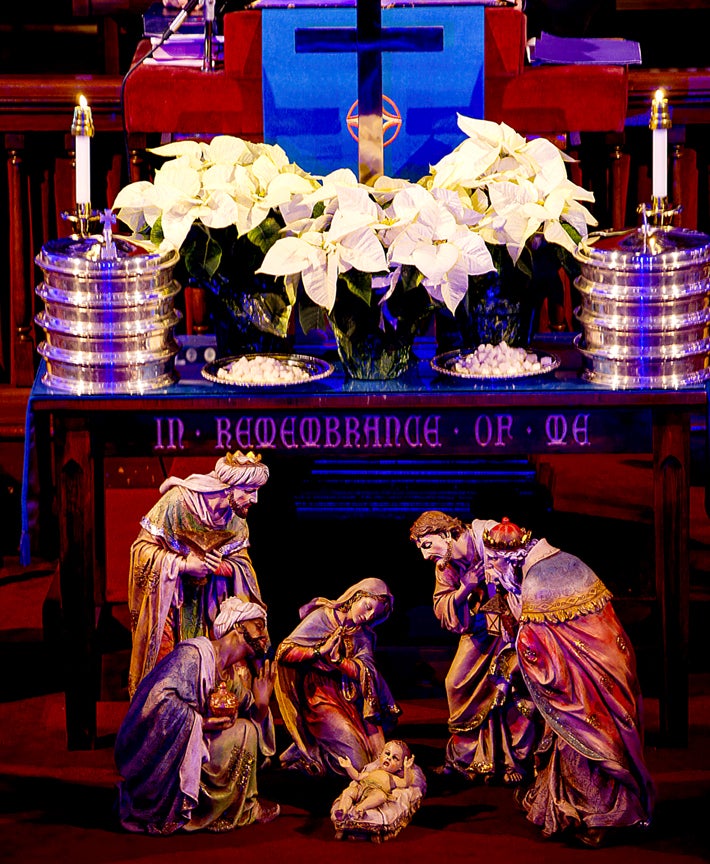By Barbara Hadley Smith, The Garden Club of Frankfort
One of the delights of the Christmas season for me is the display of red poinsettia plants in our home and church. These blooms are so cheery that they lift one’s spirits.
After the holidays are over, though, I struggle with what to do with the plants as they lose their leaves and dry up. How should I care for them? Is it worth trying to get them to bloom again?
What ends up happening to my plants that I enjoyed so much, is that, after a few weeks, I toss them out with the yard waste. I will just buy some more next year!
This year I decided to do a little research to see what the options are for maintaining poinsettias.

Background
The Christmas Poinsettia (Euphorbia pulcherrima) is native to southern Mexico, as well as parts of Guatemala and El Salvador where it thrives in the warm weather. As far back as the 14th century, the plant was used for medicinal purposes and to create red and purple dyes for clothing and textiles. In the 17th century, in the small town of Taxco de Alarcon, Mexico, Franciscan monks began using the plant in their nativity processions. Around that time, a legend of Pepita and the “Flowers of the Holy Night” began to spread and poinsettias gained their place in our Christmas traditions.
The Legend
A young girl named Pepita was traveling to visit the nativity scene in her village. She was sad because she had no money to purchase a gift for the Christ child. Her cousin, who was traveling with her, suggested she gather some weeds by the side of the road to form a bouquet. Her cousin told her, “Even the humblest gift, given with love is acceptable in His eyes.” When Pepita placed the bundle down by the altar, the weeds morphed into beautiful red flowers that became known as Cuetlaxochitl or Brilliant Flower.
A New Name
The name poinsettia emerged after botanist Joel Roberts Poinsett was appointed the first United States minister to Mexico and became enamored with these vibrant shrubs. In 1826, he sent plants to be cultivated in his South Carolina greenhouses. The plants were exhibited at the first Pennsylvania Horticultural Society Show (now the Philadelphia Flower Show) and their popularity spread across the country and to England. They became known as poinsettias. Today, about 35 million poinsettias are sold in the six weeks leading up to Christmas in the U.S., accounting for nearly $250 million in sales.
Tips for Poinsettia Care
These plants do not like cold weather. Place them away from poorly insulated windows and cold drafts. Remove the foil covering the bottom of the pot, to allow for drainage. Place the plant in a saucer or plate.
Water well, but not too much. Check the plant every other day and water when the top inch of soil is dry. Thoroughly water until all the soil is damp. If water runs out the drainage hole, dump the excess water.
Poinsettias do not like dry heat. Keep the plant away from fireplaces and radiators. Spritz it with water occasionally if the humidity is very low in your house.
Place the plants in indirect sunlight. They do not do well in either bright sunlight or full shade. Do not fertilize during the holidays. Wait until the plant is actively growing again. Cared for properly, a potted poinsettia can last two to three months in your home.
For your information
The red foliage of the poinsettia plant is modified leaves known as bracts and the flowers are the small, yellow blooms (cyathia) located in the center of the bracts. The poinsettia is not poisonous, as myth claims, but it is not meant to be eaten and should be kept out of the reach of small children and pets to avoid causing discomfort.
While red is the most popular color for poinsettias, today you can find white, pink, green and yellow poinsettias.










